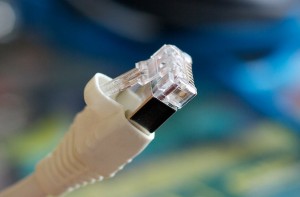For those who own alarm systems, whether they are video surveillance, access control, burglary, or fire protection, our systems watch over us and protect us around the clock.
But in today’s day and age, just about everything is connected to the internet. In many cases, this includes our alarm system. And like any device that is connected to the internet, if not taken care of properly, it can be at risk of attack from hackers. With the upcoming launch of 5G, it is extremely important this year to protect anything connected to your home network.
“Attackers used an army of hijacked security cameras and video recorders to launch several massive internet attacks” said a news piece by the Wall Street Journal. Many times, these cameras were infected by pre-compromised routers that already existed.
Here are some tips about how to protect your alarm system as well
Router security: We recommend using WPA2 security for your router. Most routers, unless they are fairly old, are capable of this type of security. For more information on this, check out your router’s brand’s website – Belkin, Linksys, and Netgear are common brands.
Firmware updates: It is very important that any device that connects to the internet, from thermostats to alarm systems to routers to televisions to computers, always has the most up to date firmware. Each device’s manual or website will have instructions on how to do those, and if there is a phone application that interfaces with the device, you can often do it through the application.
Password protection: Many devices come with generic user names and passwords. These are easy targets for hackers. Make sure you change any default passwords, and try not to use the same password on multiple devices. It is most important that this is done on the router.
New hardware: According to Kenneth White, a security researcher and director of the Open Crypto Audit Project, “If the company that made your [device] isn’t selling that model anymore or offering security updates, that’s a good sign for you to throw it in the trash.”
 In the wake of home automation, smart home, or connected home technology you may have come across the term Z-Wave technology. What is it?
In the wake of home automation, smart home, or connected home technology you may have come across the term Z-Wave technology. What is it?  With advancing technology becoming more and more present in our daily lives, it’s no wonder it’s becoming part of our homes too. From solar panels on our roofs to remotely controlled thermostats, we are creating homes akin to the Jetson’s space age abode. Unlike the Jestson’s most of us still live in homes on the ground without robot housekeepers and flying cars.
With advancing technology becoming more and more present in our daily lives, it’s no wonder it’s becoming part of our homes too. From solar panels on our roofs to remotely controlled thermostats, we are creating homes akin to the Jetson’s space age abode. Unlike the Jestson’s most of us still live in homes on the ground without robot housekeepers and flying cars. You log into your mobile app and swiftly adjust your thermostat to a comfortable temperature. By the time you get home it’s warm and cozy, no need to stay bundled up.
You log into your mobile app and swiftly adjust your thermostat to a comfortable temperature. By the time you get home it’s warm and cozy, no need to stay bundled up. “There is no place like home.” —
“There is no place like home.” —  Our world is constantly changing and evolving. Progression is an inevitable force that influences the way we live our daily lives. This is especially true of advancements made in the techy devices we interact with on a daily basis. Everything from our smartphones to our security systems. It’s the manner in how we interact with all of these devices that is driving innovation and product design. The internet and networking of devices is creating a connected environment that offers ultimate convenience and changes how we perceive the potential of security systems.
Our world is constantly changing and evolving. Progression is an inevitable force that influences the way we live our daily lives. This is especially true of advancements made in the techy devices we interact with on a daily basis. Everything from our smartphones to our security systems. It’s the manner in how we interact with all of these devices that is driving innovation and product design. The internet and networking of devices is creating a connected environment that offers ultimate convenience and changes how we perceive the potential of security systems. Maybe you’ve had a home security system installed years ago or perhaps you recently moved into a new home with an existing alarm system. Whatever the case, how can you tell if your home security system is still valid? There are some tell-tale signs that you may be dealing with an antiquated system. However, if you have a security system and are concerned it’s not as relevant as it once was, it’s time to upgrade your system. The first thing you should do is contact your security system provider for an assessment. As a security systems expert, our professionals at
Maybe you’ve had a home security system installed years ago or perhaps you recently moved into a new home with an existing alarm system. Whatever the case, how can you tell if your home security system is still valid? There are some tell-tale signs that you may be dealing with an antiquated system. However, if you have a security system and are concerned it’s not as relevant as it once was, it’s time to upgrade your system. The first thing you should do is contact your security system provider for an assessment. As a security systems expert, our professionals at 

